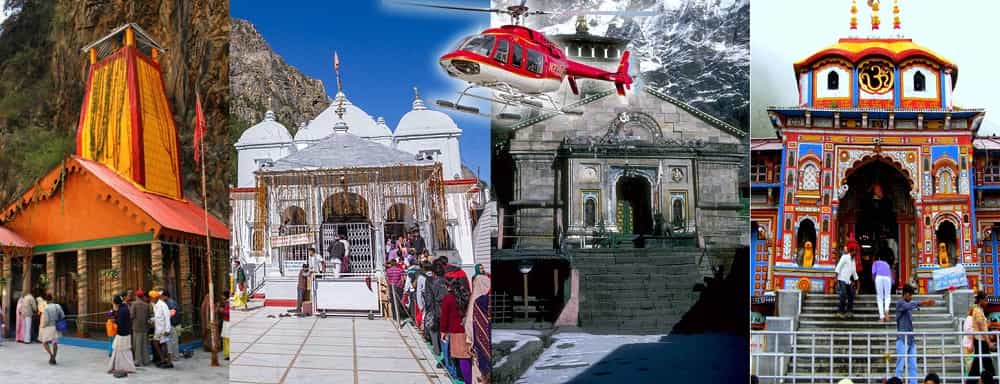Char Dham Yatra consists of four sacred sites relevant to Hinduism, those are Gangotri, Yamunotri, Kedarnath, and Badrinath. All four of these are located in the mountainous regions of Uttarakhand. Millions of devotees take a glimpse of these shrines and pay their respects to the deities by trekking several kilometres through rough, rugged, and curvy terrains. These Traditional routes have caused enduring pain, especially for kids, senior citizens, and people with physical disabilities. Hence, the emergence of helicopter services transformed the overall Yatra into a more accessible and convenient mode to embark on.
This article is going to be centered on predicting the future of Helicopter tours in Char Dham Yatra. To make you understand with clarity, we shall have a glance at Government efforts, advanced technologies, ways to mitigate challenges, and futuristic expectations related to aerial tourism.

Why is the Helicopter Yatra Mode Booming
There are numerous factors and a broader range of aspects that have made the aerial Yatra easier as well as very exciting. The future of the Char Dham Yatra is immensely driven due to its compliance with comfort expectations of tourists.
Fast Travel:
With the help of helicopters, you can complete your journey in only 2-6 days while exploring the nearby attractions and enjoying the tranquil environment far from the city noises. This provides ease for the devotees who have short vacations and the people who cannot trek at high-altitude due to physical problems.
Safety:
The other advantage that travellers feel in aerial trips is the safety of life. By bypassing the narrow, risky roads of the mountains, you can complete the journey smoothly with the help of choppers.
In addition, it is completely designed under the scrutiny of experts and follows strict protocols to maintain the safety of the passengers.
Picturesque Scenery:
These heli tours to Char Dham allow you to experience the breathtaking aerial views of the stunning Himalayan landscapes, snow-covered peaks, lush green dense forests, and vibrant landscapes.
Improved Infrastructure:
Another reason is the development of helipad infrastructures, the development of roads that lead to helipads, existing terminals are getting improved, and modern terminals are being regularly constructed. The good infrastructure undoubtedly leads to the high inflow of tourists.
Government Support:
Both the Central government and Uttarakhand Tourism are investing in making better use of helipads while balancing the environmental impacts. They are majorly focusing on providing better services at affordable rates, by also generating more tourism jobs and boosting their local economy.
Technology Advancements
A few technology advancements that are shaping the future of Helicopter yatra in Uttarakhand are:
Online Booking:
According to the needs of the modern era, the booking of planes and helicopters has now shifted to online modes. This also set an example of contemporary digitalization. You can easily book your helicopter tours via official websites.
Real-Time Tracking:
As the innovations have now become more advanced, the navigators are highly benefited. They can easily gather weather and air traffic data through GPS on their screens. It helps them to plan the departure or arrival of the helicopter accordingly.
AI and Data Integration:
Many aviation companies are now relying on AI-generated data which enables them to monitor weather patterns and the current conditions for planning the landing and take-off.
It lets them make travelling much safer and more reliable for their passengers going on sacred trips.
What to Expect in Future
Luxury:
When you travel by air mode and pay a good amount, you deserve to relish the luxury facilities. For this reason, tour operators are trying their best to come up with packages that involve luxury accommodations, VIP Darshans, guided tours, and much more facilities than present.
Eco Tourism:
Eco-tourism is a wide concept and must be given importance as it impacts our highly sensitive Himalayan ecosystem. We guess there will be numerous eco-friendly innovations, including electric or hybrid helicopters, that will help in minimizing the carbon footprint.
This way, it will also maintain the raw habitat of the Himalayas and the sacredness of the temples.
Wide Scope of Customisation:
You can also expect the big scope of customization of helicopter packages as per your needs and wants. Whether it be the time, budget, itinerary, or anything else, you will be able to shape your religious journey.
Future of Air Travel Routes
As the pilgrims’ choice is inclining towards a convenient chopper ride to complete a spiritual tour, there is a definite need to mark new routes. In the future, we hope to see such vast expansions of helipads and direct routes from different locations of metropolitan cities, mainly Delhi and Mumbai.
Even in 2025, we have noted the addition of a new helipad in Sonprayag which has helped in making the journey more convenient.
Mitigation of Challenges in Future
Let’s now examine the challenges tourists face with less technology and how they can be improved in the future:
- We lack proper data on the weather, and hence, multiple flights get canceled all of a sudden. For this, the government is paying attention to building new aircraft with advanced technologies to detect hazards in advance.
- With an increasing number of devotees every year, we face a shortage of seats. To combat these situations, online booking has been launched.
- Aerial tourism, however, greatly affects the Himalayan environment. To control these, tourism is adopting rules such as limited flying hours, noise-controlled engines, and awareness among people.
Best Time to Visit
Char Dham Yatra is open for about six months in a year. Each season brings a different vibe and experience to the journey. The best time to visit these revered temples by helicopter is mainly between May and June or September and October.
May-June (summer):
The summer season celebrates a large crowd of devotees. The weather in these months appears kind, pleasant and gentle, which is perfect to commence on the air ride. In addition, the clear sky makes flying easy and enjoyable.
September-October (autumn):
In the post-monsoon season, the sky is free from dark clouds and the weather stays calm. Hence, the air journey to the holy sites appears hustle-free and smooth.
Conclusion
By summing up all the factors, reasons, and aspects, the future of the helicopter Yatra seems very bright and accessible. On seeing the continuous growing demand to visit Char Dham by Aerial mode, helicopter services will continue to expand year by year.
We hope, this blog will help you to predict the golden future of aerial tourism over the valleys of Himalayas.
Suggested Tour:

 Call
Call WhatsApp
WhatsApp Enquiry
Enquiry